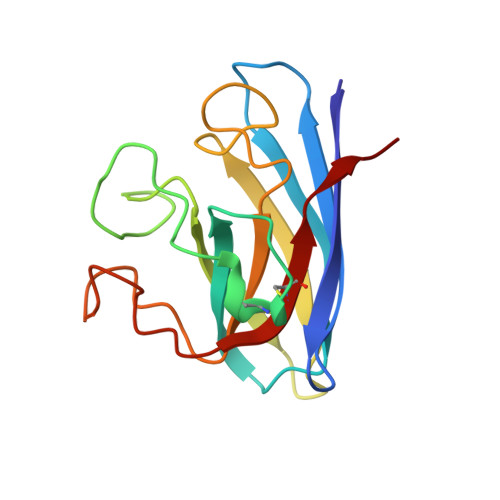Characterization of a covalent polysulfane bridge in copper-zinc superoxide dismutase .
You, Z., Cao, X., Taylor, A.B., Hart, P.J., Levine, R.L.(2010) Biochemistry 49: 1191-1198
- PubMed: 20052996
- DOI: https://doi.org/10.1021/bi901844d
- Primary Citation of Related Structures:
3K91 - PubMed Abstract:
In the course of studies on human copper-zinc superoxide dismutase (SOD1), we observed a modified form of the protein whose mass was increased by 158 mass units. The covalent modification was characterized, and we established that it is a novel heptasulfane bridge connecting the two Cys111 residues in the SOD1 homodimer. The heptasulfane bridge was visualized directly in the crystal structure of a recombinant human mutant SOD1, H46R/H48Q, produced in yeast. The modification is reversible, with the bridge being cleaved by thiols, by cyanide, and by unfolding of the protein to expose the polysulfane. The polysulfane bridge can be introduced in vitro by incubation of purified SOD1 with elemental sulfur, even under anaerobic conditions and in the presence of a metal chelator. Because polysulfanes and polysulfides can catalyze the generation of reactive oxygen and sulfur species, the modification may endow SOD1 with a toxic gain of function.
Organizational Affiliation:
Laboratory of Biochemistry, National Heart, Lung, and Blood Institute, Bethesda, Maryland 20892, USA.















